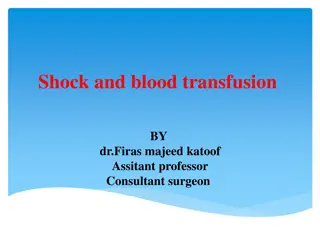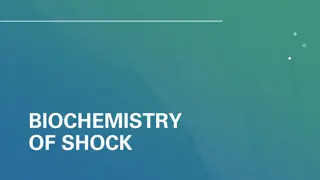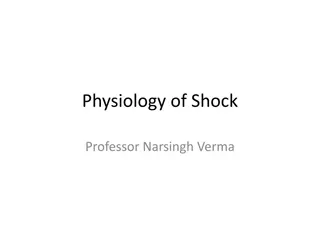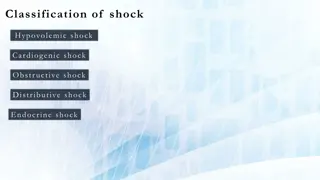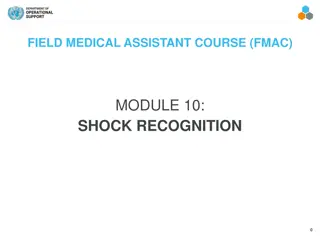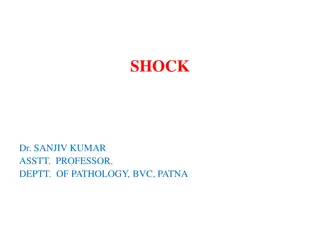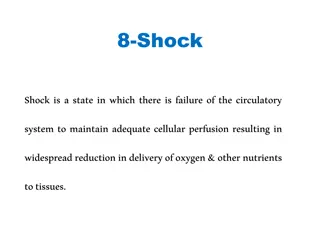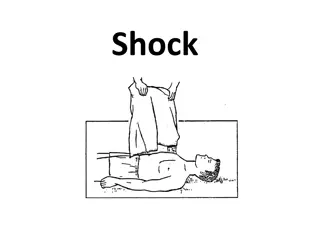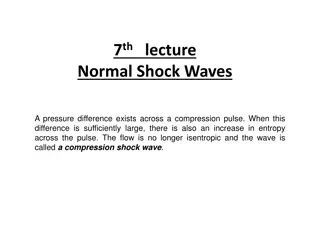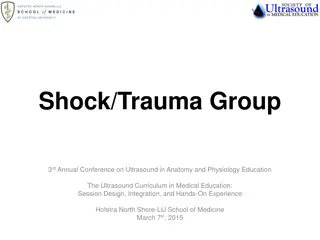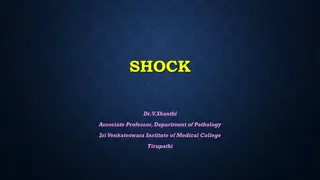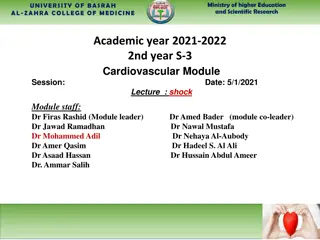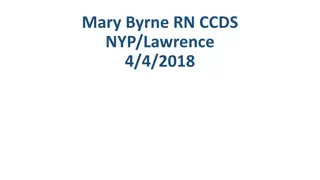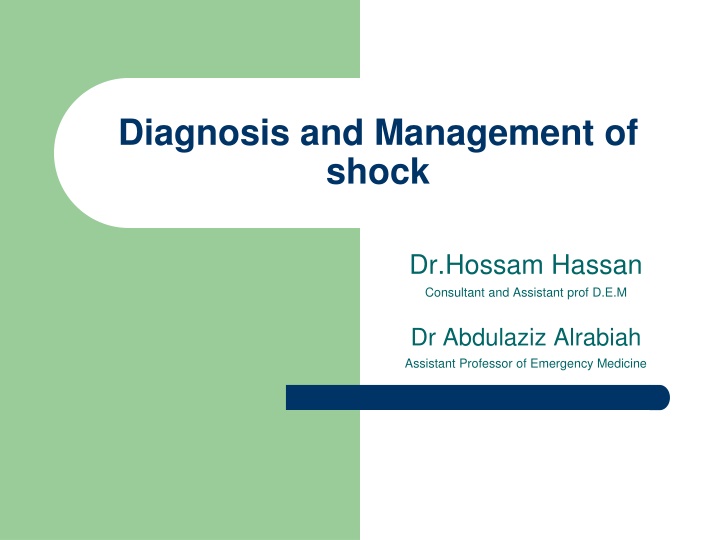
Diagnosis and Management of Shock in Emergency Medicine
"Explore the diagnosis and management of shock in emergency medicine through a case study, vital signs assessment, and classification of shock types. Learn about the clinical manifestations, categorization, and initial interventions needed to stabilize a patient in shock."
Download Presentation

Please find below an Image/Link to download the presentation.
The content on the website is provided AS IS for your information and personal use only. It may not be sold, licensed, or shared on other websites without obtaining consent from the author. If you encounter any issues during the download, it is possible that the publisher has removed the file from their server.
You are allowed to download the files provided on this website for personal or commercial use, subject to the condition that they are used lawfully. All files are the property of their respective owners.
The content on the website is provided AS IS for your information and personal use only. It may not be sold, licensed, or shared on other websites without obtaining consent from the author.
E N D
Presentation Transcript
Diagnosis and Management of shock Dr.Hossam Hassan Consultant and Assistant prof D.E.M Dr Abdulaziz Alrabiah Assistant Professor of Emergency Medicine
Objectives Identify the 4 main categories of shock Discuss the goals of resuscitation in shock Summarise the general principles of shock management Describe the physiologic effects of vasopressors and inotropic agents
CASE STUDY A25 Years old lady with no prior history of any chronic disease presented to the emergency department complaining of a productive cough of greenish yellow sputum.
VITAL SIGNS Temp.38.8 Ht.Rate 129/Min R.R 27/Min BP 112/68
Where do you triage this Pt.? What information do you need to determine if this Pt. is in shock? What initial interventions are needed to stabilise this Pt.?
Shock is a syndrome of impaired tissue oxygenation and perfusion due to a variety of causes If it left untreated: Irreversible injury ,Organ dysfunction And finally death
Clinical alterations in shock The presentation of patients with shock may be Subtle(mild confusion, tachycardia) Or easily identifiable(profound hypotension, anuria)
The clinical manifestation of shock result from: 1- inadequate tissue perfusion and oxygenation 2- Compensatory responses 3- The specific aetiology
Classification of shock 1-hypovolemic Hemorrhagic nonhemorrhagic 2-Cardiogenic Ischemic Myopathy Mechanical Arrhythmia
3- Distributive Septic Adrenal crises Neurogenic (spinal shock) Anaphylactic
4- Obstructive Massive Pulmonary embolism Tension pneumothorax Cardiac tamponade Constrictive pericarditis
HYPOVOLEMIC SHOCK It occurs when the intra vascular volume is depleted relative to the vascular capacity as a result of: 1- bleeding 2- G.I.T loss 3-urinary loss 4-dehydration
HYPOVOLEMIC SHOCK Management: The goal is to restore the fluid loss Vasopressors are used only as a temporary method to restore B.P until fluid resuscitation take place Permissive hypotension I.e. SBP 90 mmHg Trauma patient with active bleeding: early blood transfusion
Distributive shock It is characterised by loss of vascular tone The most common form of distributive shock is septic shock The hemodynamic profile of septic shock include
Cardiac output normal or increased Ventricular filing pressure normal or low SVR low Diastolic pressure low Pulse pressure wide
Management of septic shock The initial approach to the patient with septic shock is the restoration and maintenance of adequate intravascular volume Prompt institution of appropriate antibiotic
CARDIOGENIC SHOCK Forward flow of blood is inadequate due to pump failure I.e.loss of functional myocardium It is the most severe form of heart failure and it is distinguished from chronic heart failure by the presence of hypotension, hypo-perfusion and the need for different therapeutic interventions
Hemodynamic characteristics Cardiac output low Ventricular filing pressure high SVR High Mixed venous o2 sat low
MANAGEMENT OF CARDIOGENIC SHOCK The main goal is to improve myocardial function Arrhythmia should be treated Reperfusion PCI is the treatment of choice in ACS Inotropes and vasopresor
Obstructive shock Obstruction to the outflow due to impaired cardiac filling and excessive after load Cardiac tamponade and constrictive pericarditis impair diastolic filling of the Rt.ventricle Tension pneumothorax limit Rt.ventricular filing by obstruction of venous return Massive pulmonary embolism increase Rt.ventricular afterload
Hemodynamic profile in obst. Shock Cardiac output low Afterload high Lt.Vent.filling pressure variable Pulsus paradoxicus in Tamponade Distended Jugular viens
Management Of Obstructive Shock Treat the cause !!
GENERAL Principles of shock management The overall goal of shock management is to improve oxygen delivery or utilisation in order to prevent cellular and organ injury Effective therapy requires treatment of the underlying aetiology
Restoration of adequate perfusion, monitoring and comprehensive supportive care Interventions to restore perfusion: achieving an adequate B.P increasing cardiac output optimising oxygen content of the blood
In Summery Management of shock 1- Monitoring 2- Fluid Therapy 3- Vasoactive agents 4- Treat the cause
Email: aalrabiah@ksu.edu.sa Twitter: @azizalrabiah


